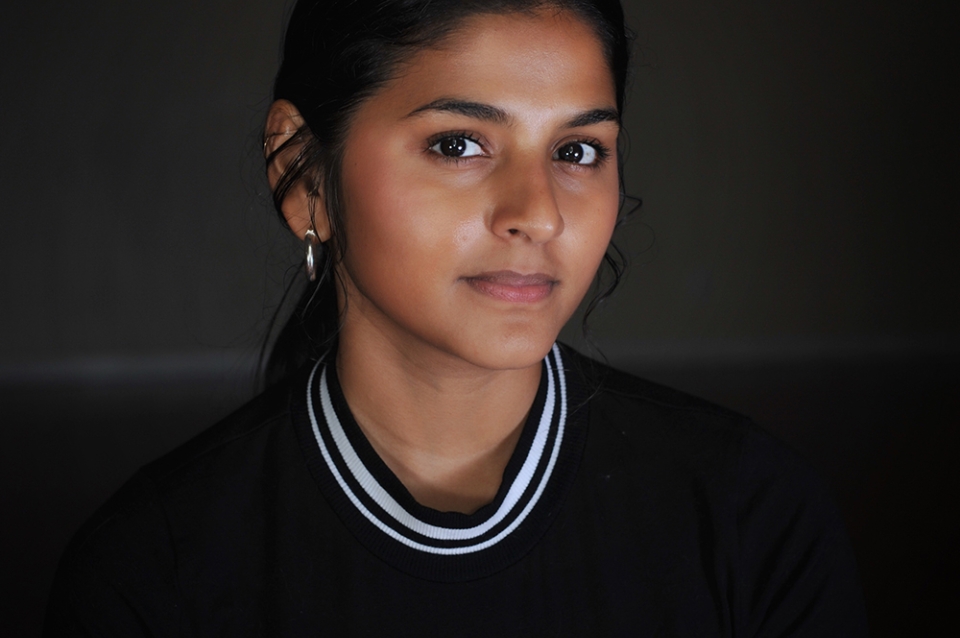November 29, 2018
Stuart Weitzman School of Design
102 Meyerson Hall
210 South 34th Street
Philadelphia, PA 19104
Get the latest Weitzman news in your Inbox
Six years ago, Farrah Rahaman left Trinidad to come to Philadelphia for college.
The trip wasn’t just transnational, she notes; it took her across the global North-South divide. Here in the United States, with the benefit of Global North resources and the perspective of distance, Rahaman focuses her research and practice on the “subjectivities of the Global South.”
“I’m interested in that space that we fantasize over, that we construct laws and policies over, that we try to constrict movement and social behavior over, and how people are disrupting that—either through daily practices, direct action, or community defense, and all of it being in the tide of cultural expression,” Rahaman says.
Rahaman is a first-year student in the new dual master’s degree program in fine arts and social work at PennDesign and the School of Social Policy & Practice (SP2), a program that focuses on the integration of art and social justice. During her undergraduate work at Drexel, where she studied global studies and art history, Rahaman began working with film, and during her senior year, she had a fellowship at CAMRA, the Collective for Advancing Multimodal Research Arts at Penn. As part of the fellowship, she worked on a film project with communities of color operating urban farms in Philadelphia and Camden. The work also introduced her to Penn’s Deborah Thomas, R. Jean Brownlee Professor of Anthropology, and SP2 Dean John L. Jackson, Jr.—relationships that helped her see the possibilities in academic research as well as multimodal art practice.
“We tried to embody a participatory practice, and we also tried to embody the elements of ethnography every step of the way,” Rahaman says. “I was thinking about myself, about the people I was working with, about building relationships, about how my being there impacts the folks I was working with in positive or negative ways, what I could do to be of use to the communities I was working with and how I would even approach filmmaking.”
Meaning, Rahaman says, is collectively produced, though traditionally the collaborative aspects of research have not been properly understood or acknowledged. The balance of power is tipped in favor of scholars (and filmmakers) and away from the subjects of their work, whose participation and labor are crucial to the success of a project. Multimodal work—creating films but also sharing the filmmaking process with subjects while carrying out critical research around the historical use and abuse of the camera—can help restore some of that balance, she says. The urban farming project, for example, was an exercise in sharing the power of the lens with the farming communities themselves. And the MFA/MSW is built around that multimodal, cross-disciplinary perspective, Rahaman says.
“For the work that I want to do, it requires a very sensitive and informed understanding of people and place,” Rahaman says. “And I believe that as an artist you can glean that through deep work in community, but as a social worker you are trained to meet people where they’re at and to connect them, to see their needs and often their struggle and to not frame that from a deficit standpoint.”
In addition to her coursework, Rahaman contributes to Slought, a collaborative research organization based at Penn that focuses on socio-political change. (The organization has a new working group focused on community knowledge production in Trinidad and Tobago.) In the long term, Rahaman wants to return to Trinidad or elsewhere in the region, and establish a cultural center and residency program that support community-based work while providing childcare, exhibit space, education and other services—“all of the women of color dreams in the Caribbean,” she says.
Until then?
“I wouldn’t discount a PhD,” she says, “because I really see the ability to transform the academy by populating it with political black and brown bodies, and white allies who are doing that work as well. I don’t think that the academy needs to be burnt down, but I do think it needs to be chopped up.”


 Expand Image
Expand Image


